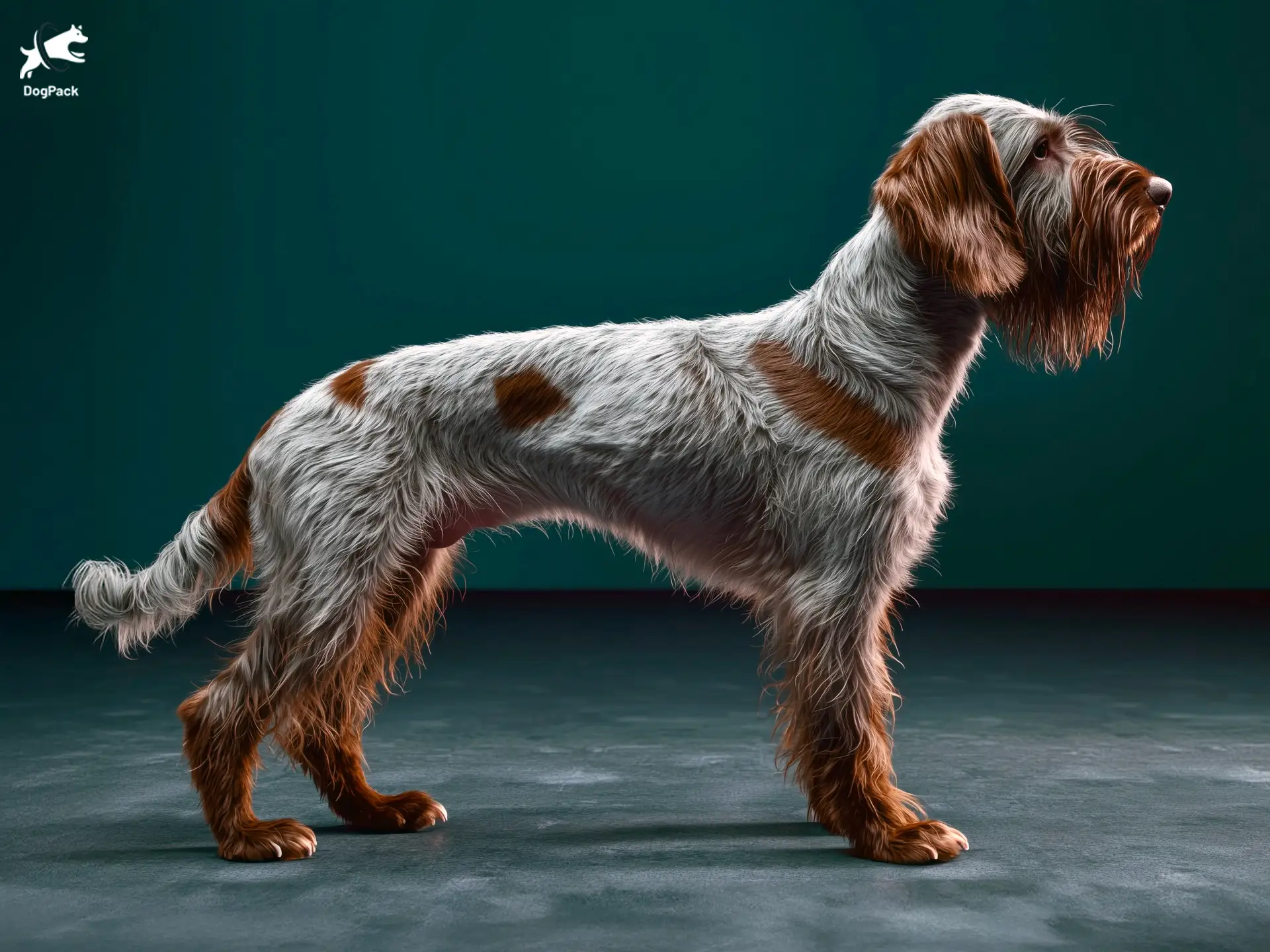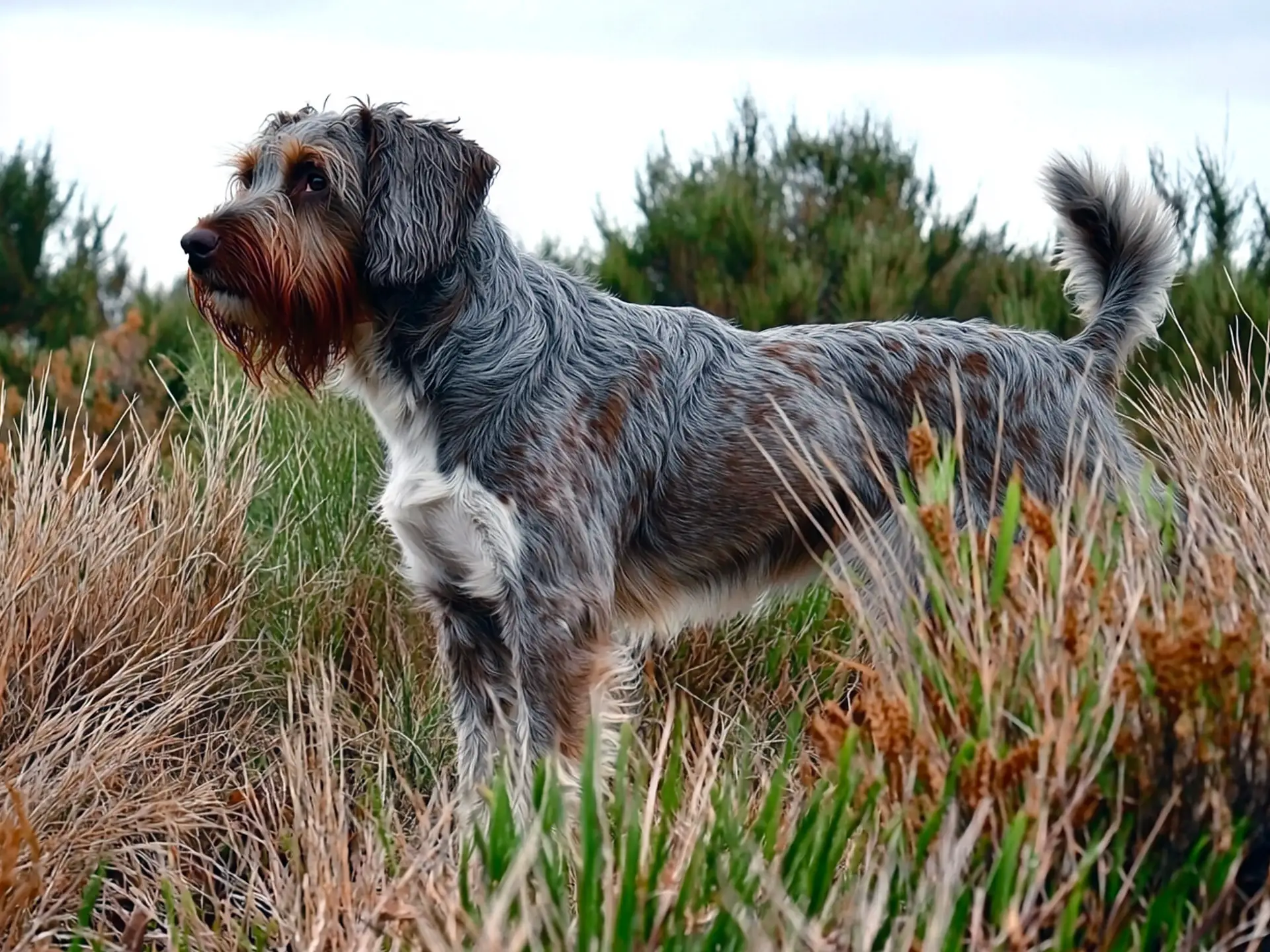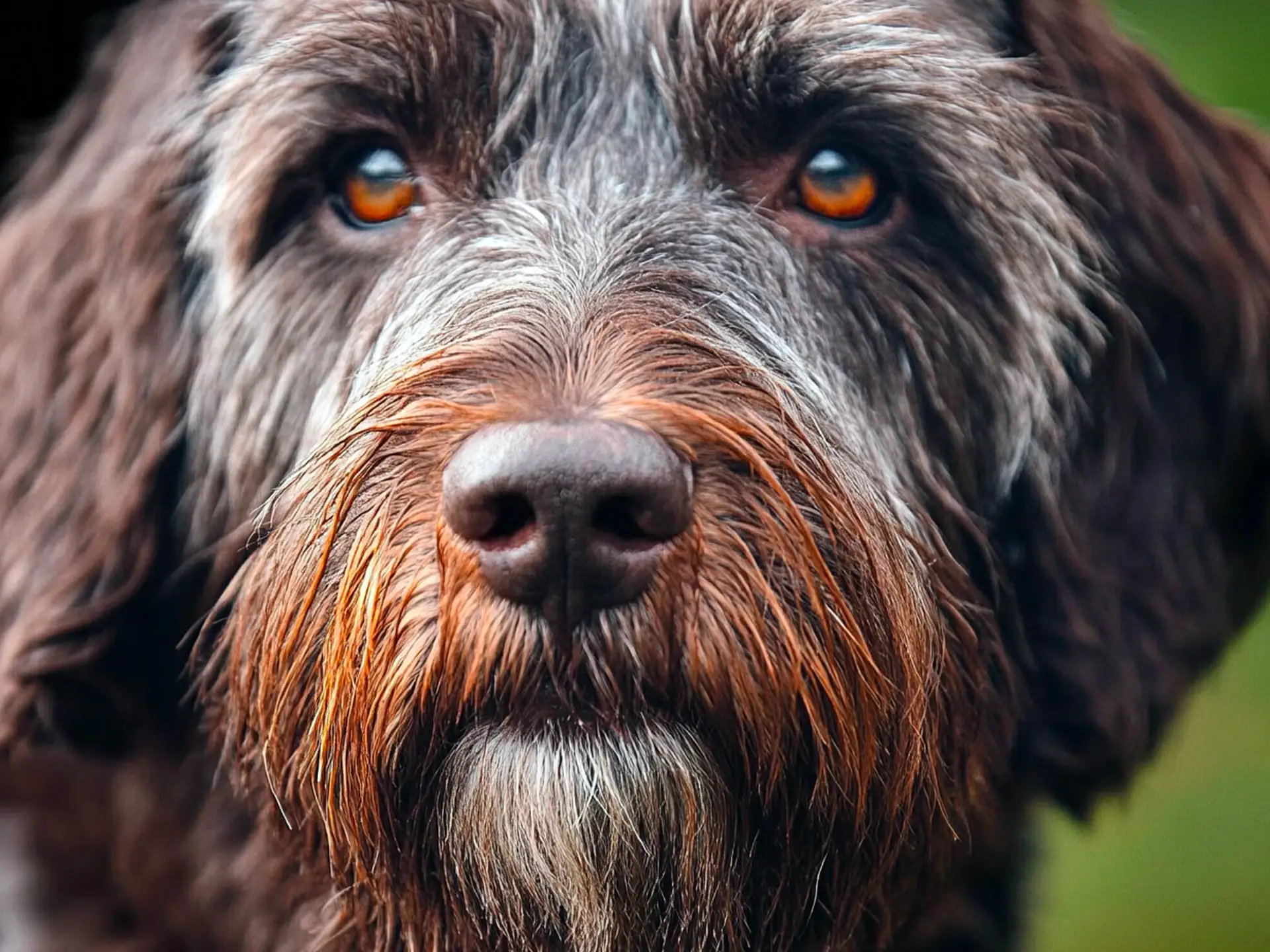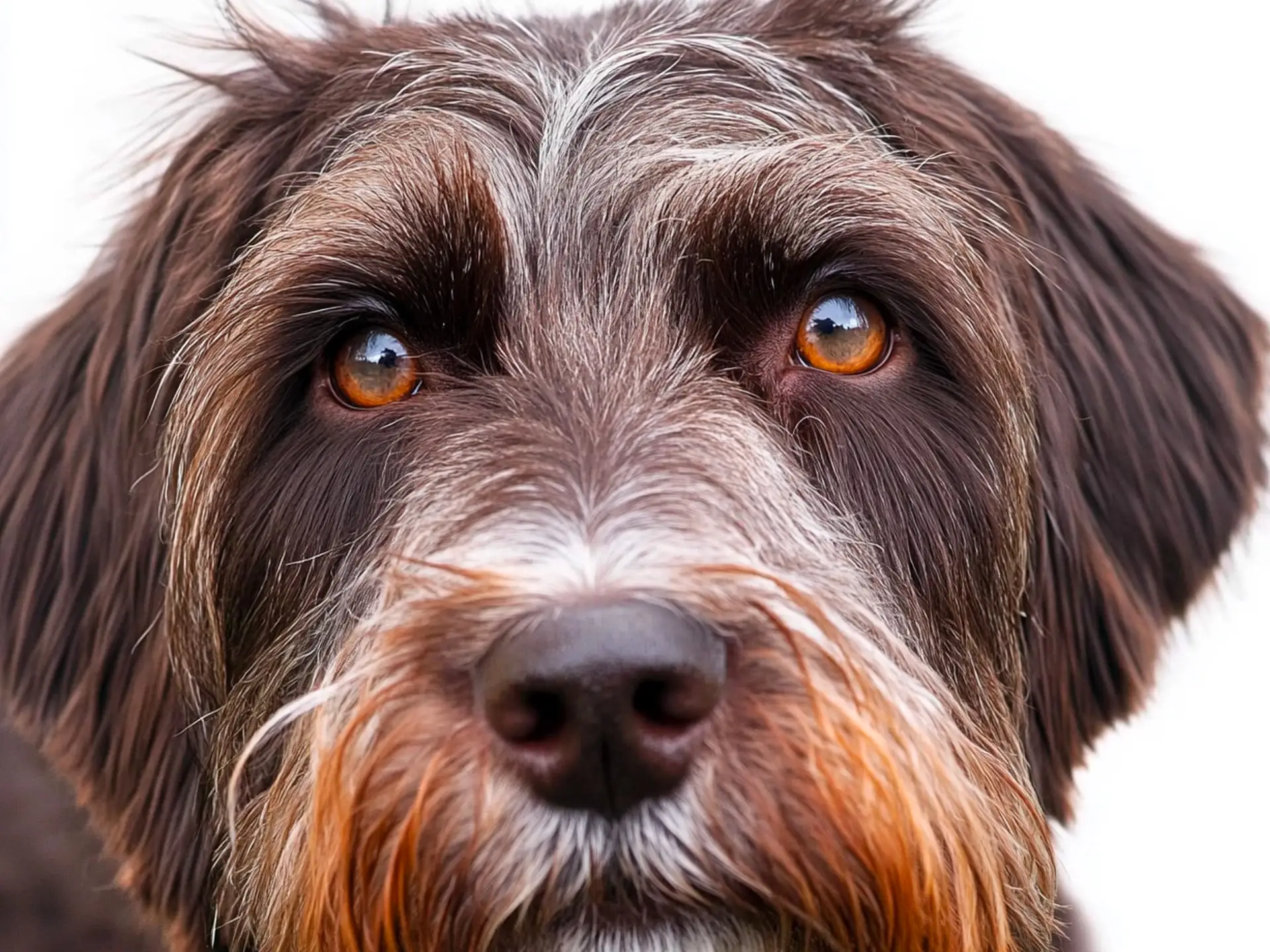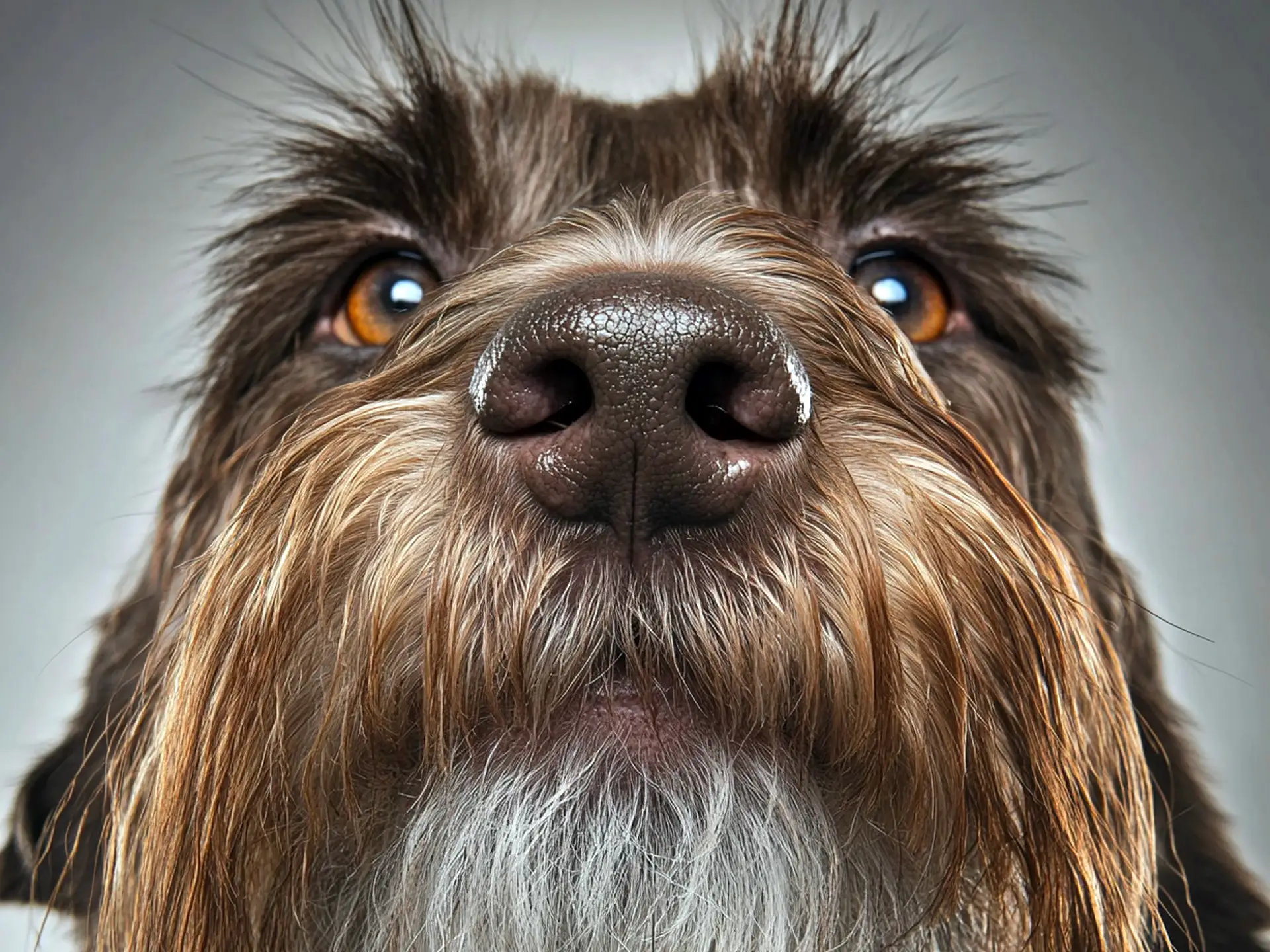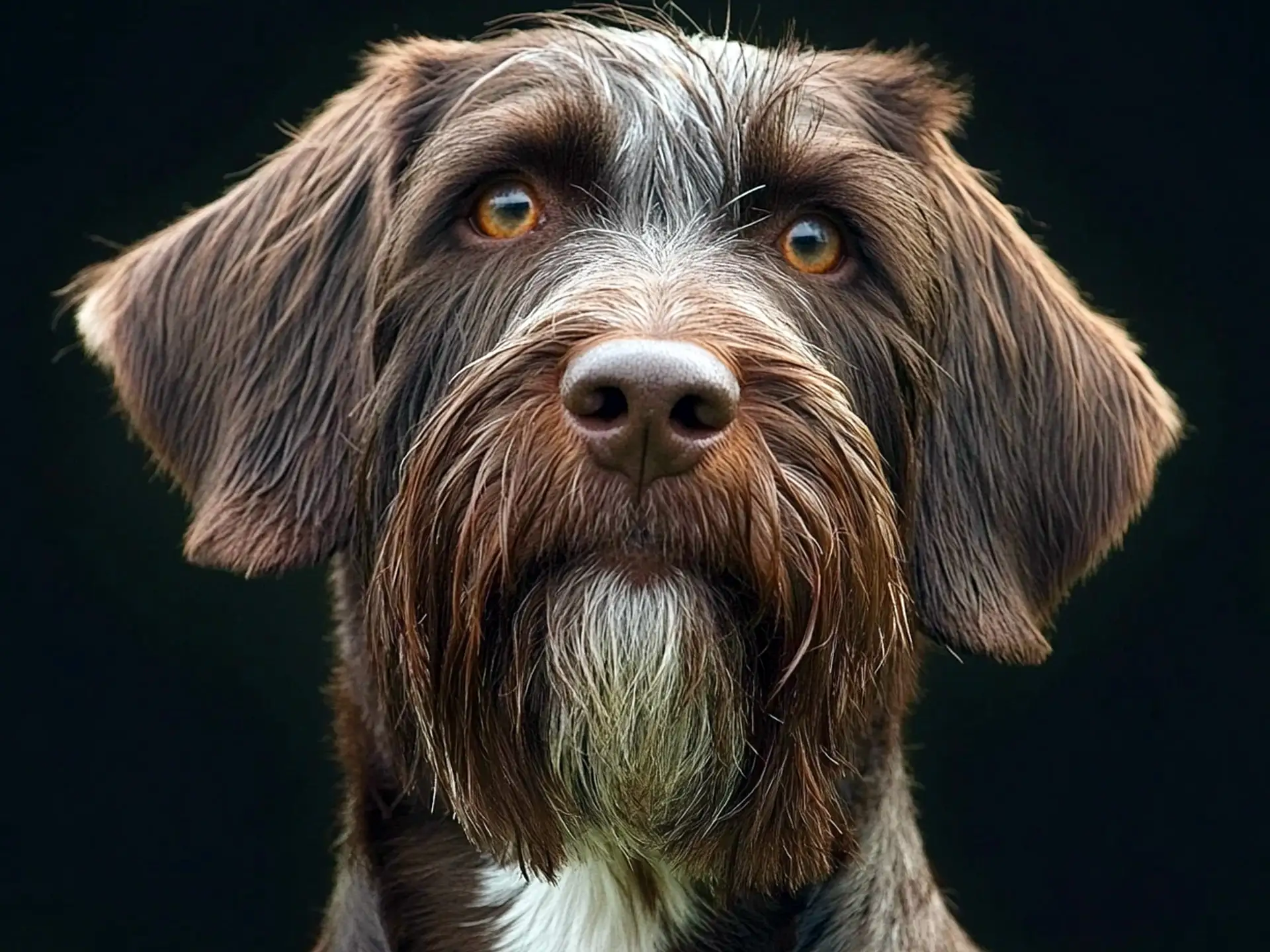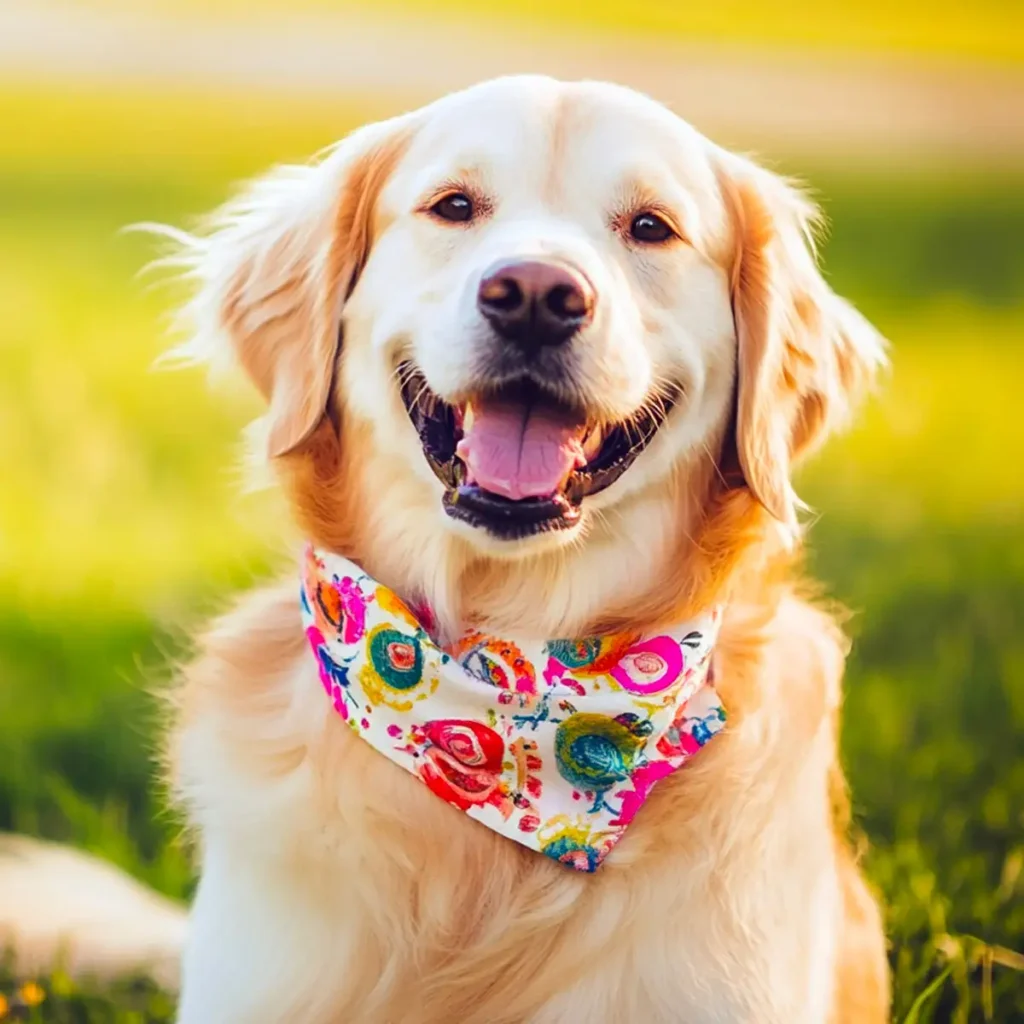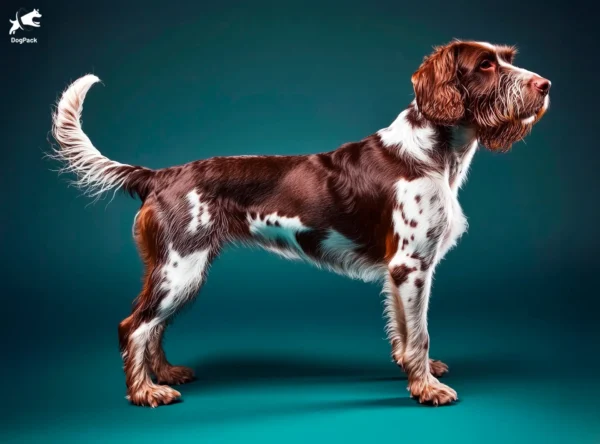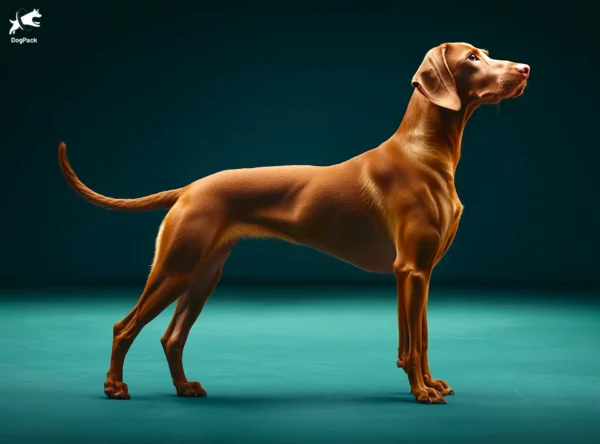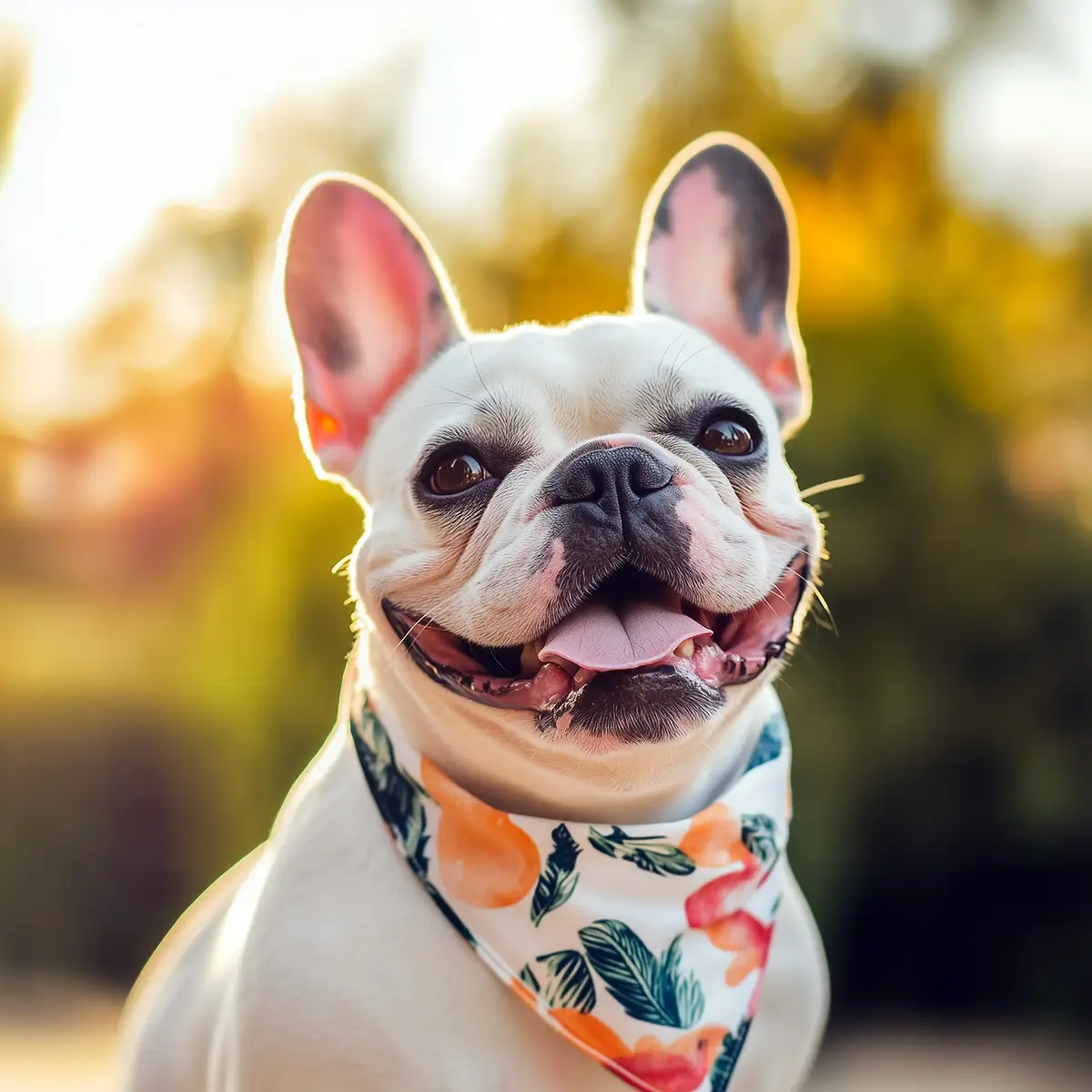Wirehaired Pointing Griffon Dog Breed Info & Overview
Meet the fun-loving Wirehaired Pointing Griffon—an active companion known for its rugged good looks, unwavering loyalty, and lower-shedding coat. Bred as a versatile hunting dog, this breed excels at tracking, retrieving, and pointing. Whether romping through fields or cuddling at home, they radiate enthusiasm, making them the perfect addition to an energetic household.
Characteristics
Pictures
Breed History
The roots of this robust hunting dog trace back to the late 19th century, when a passionate breeder named Eduard Karel Korthals set out to create the ideal gun dog. Drawing from various griffon-type and pointer breeds, he developed a rough-coated companion famed for its all-around hunting prowess. Over time, the Griffon gained favor among European sportsmen, thanks to its tireless spirit and effective field performance.
Initially popular in France and the Netherlands, these canines excelled at hunting both on land and in water, swiftly adapting to challenging terrains. Their wiry coats and strong legs allowed them to navigate marshes, dense brush, and wetlands with ease. By selectively breeding for intelligence, stamina, and versatility, Korthals secured the dog’s reputation as a reliable partner for hunters of diverse game.
Eventually, the Griffon crossed the Atlantic, capturing the attention of American sportsmen seeking an energetic, cooperative dog. Once in North America, enthusiasts continued refining the breed, focusing on its pointing and retrieving skills. Through clubs and dedicated breeders, the tradition of the Wirehaired Pointing Griffon persists, passing down a legacy of remarkable field instincts and loyal, family-oriented companionship.
Temperament, Personality
Expect a lively, people-focused character whose primary aim is to stay near their favorite humans. These dogs often form strong bonds with family members, displaying affection through gentle nudges and tail-wags. Although sometimes a bit goofy, their earnest desire to please shines through in daily interactions, making them ideal for owners who appreciate both a hardworking hunting buddy and a fun-loving pal.
Social by nature, they typically get along well with other pets if introduced early. Their overall friendliness extends to guests, but an occasional cautious streak may emerge around unfamiliar individuals. Regular outings and positive socialization—like puppy playdates or structured dog-park visits—help keep them balanced. With consistent exposure to various sights, sounds, and scents, they grow into confident dogs ready for new adventures.
While the breed is calm indoors when sufficiently exercised, their instincts spark to life outdoors. A day spent in the yard sniffing, running, and “helping” you with chores truly brightens their mood. Give them a job, and they’re happiest—whether it’s retrieving a duck on a hunt or fetching tennis balls in the backyard. In return, they reward you with unwavering loyalty and plenty of comedic moments.
Physical Characteristics
The Wirehaired Pointing Griffon stands out with its striking, wiry coat that offers protection in harsh conditions. That hallmark mustache and beard aren’t just for show; they shield the muzzle when pushing through brush or tall grass. Underneath the scruffy fur is an athletic build—well-muscled legs, a sturdy torso, and a robust frame built for stamina and endurance.
A medium-to-large breed, Griffons have an intelligent, alert expression that underscores their hunting roots. Ears are set relatively high and hang close to the head, often contributing to their endearing, somewhat “shaggy” look. Their expressive eyes, varying from yellowish-brown to darker shades, radiate warmth and curiosity. Colors range from steel gray with brown markings to chestnut roan, though the distinguished grizzle appearance is most typical.
Beneath their coat, these dogs exhibit a lean but muscular physique, ensuring agility on both land and in water. A moderately long tail, sometimes docked in certain regions, helps with balance when sprinting or navigating uneven terrain. While the overall impression might be a slightly unkempt pup, the purposeful design of their coat and body reveals a specialized breed engineered for rugged tasks.
Health Issues
Generally hearty, these dogs still face certain conditions worth monitoring. Hip dysplasia is a concern, as with many active, medium-to-large sporting dogs. Regular veterinary checks, especially focused on joint health, are vital. Screening through organizations like the Orthopedic Foundation for Animals can offer peace of mind before breeding or adopting.
Eye issues like progressive retinal atrophy occasionally occur, potentially affecting vision over time. Early detection is key, so schedule routine eye exams if possible. Additionally, ear infections can crop up due to their floppy ears, which may trap moisture—especially after water retrieves. Keeping the ear canal clean and dry helps prevent painful infections.
Epilepsy can sometimes appear, with seizures managed through medication and vet guidance. To support overall health, maintain a balanced diet, regular exercise, and checkups that include baseline bloodwork. While the Wirehaired Pointing Griffon has no overwhelming list of hereditary diseases, proactive health measures ensure a long, vibrant life. Early intervention and responsible breeding practices help reduce the incidence of these ailments.
Grooming Needs
That coarse, double-layered coat requires a fair bit of upkeep—though it’s not constant shedding you’ll fight, but rather tangles, mats, and dirt buildup from outdoor escapades. Weekly brushing helps remove debris and keeps the hair neat. A slicker brush or a stainless-steel comb works well, plus a quick once-over after muddy adventures is wise.
Hand-stripping twice a year is often recommended to remove dead hairs and maintain the coat’s wiry texture. This process ensures fresh growth and keeps shedding to a minimum, which can be a bonus for allergy-prone households. Trimming the ear hair and keeping the mustache area tidy also prevent unpleasant odors and potential infections.
Bathing shouldn’t be overdone—every few months or after particularly messy outings will suffice. Over-bathing strips natural oils, making the coat less water-resistant and more prone to dryness. Routine checks of nails, ears, and teeth should become second nature. With consistent grooming, the dog remains comfortable, healthy-skinned, and keeps that characteristic scruffy charm.
Exercise Requirements
Built for active pursuits, these dogs thrive on daily exercise that challenges both body and mind. Jogging, hiking, and extended fetch sessions keep them satisfied. If you’re near a lake or have a pool, don’t be surprised if they leap in joyfully—swimming suits their water-retrieving instincts perfectly.
A rousing game of “find it” in the yard taps into their keen sense of smell, engaging them mentally. Griffons love exploring new territory, so weekend trips to dog-friendly trails or wide-open fields are a great idea. They’re part of the sporting dog breeds, which means they require longer, more vigorous outings than many other canines.
Aim for at least 60 minutes of structured activities each day, plus additional play or training time. Interactive toys that encourage problem-solving can also help keep them occupied indoors. Insufficient exercise often leads to restlessness or unwanted behaviors—like chewing shoes or barking at shadows. Consistency is key: tired Griffons are content Griffons, and content Griffons make wonderful companions.
Training Tips
Smart and eager to please, they typically respond well to positive reinforcement methods. Offer treats, praise, or a quick game of tug as rewards. Start basic obedience young—sit, stay, and recall lay the groundwork for advanced commands. Keep sessions upbeat and varied; repetitive drills risk boredom, and a bored dog is less likely to listen.
Socialization is equally crucial. Introduce them to friendly dogs, new environments, and different people from puppyhood. This reduces any timidness or wariness and hones their well-rounded temperament. With consistent gentle guidance, you’ll shape a dog that can seamlessly transition from an energetic hunting partner to a calm household companion.
Because of their strong prey drive, recall training can be a challenge when wildlife distractions appear. Use a long leash in safe, open areas while practicing. Reinforce the “come” command with enthusiasm, ensuring they associate returning to you with fun and rewards. Patience and encouragement go a long way, keeping them motivated to follow your lead in both the field and the living room.
Nutrition, Diet
Wirehaired Pointing Griffons are high-energy dogs that benefit from a nutrient-dense diet formulated for active canines. Look for premium kibble or fresh-food diets rich in protein sources like chicken, fish, or lamb to support their lean muscle mass. Complex carbohydrates (e.g., sweet potatoes) and healthy fats (e.g., salmon oil) sustain their energy levels during vigorous outdoor activities.
Because they burn calories rapidly, adult Griffons often need around 2½ to 3 cups of quality dog food daily, divided into two meals. A particularly active dog may require a bit more to maintain a healthy weight, especially if regularly engaged in fieldwork. Monitor their body condition—visible ribs mean they may need extra portions, while a thickening waistline suggests cutting back slightly.
Avoid free-feeding; scheduled meals help manage calorie intake and reduce bloating risks. Some owners add a splash of warm water or low-sodium broth to kibble for palatability and hydration. Supplements like joint-support formulas (containing glucosamine and chondroitin) can be beneficial, especially for a breed known to be active on varied terrain. Always consult a vet for tailored dietary advice or adjustments.
Adoption, Breeders
When adopting or purchasing a Wirehaired Pointing Griffon, aim for reputable sources. Look for breeders who perform health screenings—like OFA certification—to minimize hereditary issues. Interview them about hip scores and potential eye conditions. A responsible breeder will be transparent about lineage and provide early socialization. Consider older rescues if you prefer a calmer temperament over the energy of a puppy.
Breed-specific rescue organizations often have dedicated volunteers who understand Griffons’ unique needs. They’ll guide you toward dogs that align with your activity level and experience. An advantage of adopting is sometimes finding a dog already house-trained and socialized. Patience during the transition period ensures a smoother adjustment for both pup and family.
Several clubs and resources offer deeper insights on the breed. Check the American Wirehaired Pointing Griffon Association for breed standards, health details, and local event listings. For reliable adoption listings, websites like Petfinder also host Griffons in need of new homes. Whether you choose a puppy or an adult, aligning with knowledgeable breeders or reputable rescues helps secure a happy, well-adjusted companion.
Family Pet?
These dogs are enthusiastic about family life, happily trailing kids in the backyard or snoozing at your feet after a day of fun. Their gentle demeanor shines around children, though supervision is still advised, as their lively energy might inadvertently topple smaller kids. A quick romp or training session in the yard can bring out that playful spark everyone adores.
For multi-pet households, early introductions and proper socialization pave the way for harmony. Despite a robust prey drive, they often coexist well with other dogs. Cats may also be accepted if raised together, although the cat’s temperament plays a role, too. Because they crave companionship, leaving them alone for long stretches can lead to boredom-driven mischief or separation anxiety.
When integrated thoughtfully, a Wirehaired Pointing Griffon becomes a loyal, tail-wagging fixture of daily life. Older kids often love teaching them new tricks, especially with the dog’s comedic streak shining through. Their affectionate nature can charm everyone under the roof, making them a solid contender for those seeking a dependable, active family companion.
Right For You?
If you dream of a companion to match your energetic lifestyle—someone always ready for a hike, run, or game of fetch—this breed has your back. They need room to roam and an owner willing to invest in mental and physical stimulation. Apartment living can work only if you commit to daily vigorous outings and interactive play to keep them satisfied.
A household that enjoys the outdoors, appreciates a dog’s comedic side, and can handle a bit of grooming is ideal. Individuals uninterested in frequent exercise or those looking for a laid-back lapdog might find the Griffon’s needs overwhelming. Because they thrive on bonding, plan to dedicate time for training and quality interaction. In return, you’ll gain a steadfast friend always eager for an adventure.
Ultimately, the choice boils down to your schedule, activity level, and willingness to nurture an intelligent, spirited pet. If you can provide ample exercise, consistent training, and affectionate guidance, you’ll likely discover this breed’s unwavering devotion is well worth the effort. Families who love nature and want a companion to share in their daily bustle are often the best match.
Conclusion
Ready to embrace a fun-loving, driven, and loyal sporting partner? A Wirehaired Pointing Griffon could be your ideal match, especially if you enjoy outdoor pursuits and have room in your life for an affectionate, high-energy dog. Yes, they require diligent grooming and plenty of exercise, but the payoff is a steadfast companion you’ll adore for years. For those willing to devote time and care, this scruffy adventurer is a joy.
FAQs
-
Why does the Wirehaired Pointing Griffon have such a distinctive beard and eyebrows?
The Wirehaired Pointing Griffon’s facial hair serves a functional purpose. The beard helps trap scent when tracking, while the bushy eyebrows protect their eyes from debris when hunting in dense brush or tall grass.
-
Do Wirehaired Pointing Griffons have webbed feet?
Yes, Wirehaired Pointing Griffons have partially webbed feet, which aid in swimming. This trait makes them excellent water retrievers, allowing them to navigate lakes, marshes, and wetlands with ease.
-
How well does the Wirehaired Pointing Griffon adapt to cold weather?
Thanks to their dense, wiry coat and undercoat, Wirehaired Pointing Griffons are well-adapted to cold climates. Their fur provides insulation against chilly temperatures, making them comfortable in snowy conditions when properly exercised.
-
Why do Wirehaired Pointing Griffons have such high stamina compared to other pointing breeds?
Unlike some pointing breeds that rely on short bursts of speed, Wirehaired Pointing Griffons were bred for endurance hunting. Their ability to sustain energy over long distances makes them ideal for all-day hunts in rugged terrains.
-
What makes the Wirehaired Pointing Griffon different from a German Wirehaired Pointer?
While both breeds share a wiry coat and hunting skills, the Wirehaired Pointing Griffon is generally smaller, has a softer temperament, and relies more on close-range hunting. German Wirehaired Pointers tend to be more independent and have a stronger prey drive.
Breed Ratings
Bright, eager to learn, and quick to pick up commands, though they can be a bit stubborn if training lacks variety.
Loves interactive games and can maintain a puppy-like zest for fun well into adulthood—always up for some family entertainment.
High-octane dogs needing substantial daily exercise to stay balanced and avoid restless mischief.
Minimal hair loss but requires periodic hand-stripping to keep the wiry coat healthy and reduce stray fur.
Instinctive hunters that enjoy chasing birds and small critters, making early training and socialization essential.
Weekly brushing plus regular hand-stripping. Not complicated, but more maintenance than truly wash-and-go coats.
Highly trainable with positive methods; they respond best to fun, varied sessions rather than repetitive drills.
Prefers company and can become anxious or bored if isolated too long, especially without enough exercise.
Will alert you to strangers or unusual noises; controlled socialization and training keep barking in check.
Generally low droolers, but expect some wet whiskers after they drink or retrieve from water.
Typically enjoys canine companions, but early introductions and proper manners ensure smoother group interactions.
Robust overall, but watch for hip issues and occasional eye concerns. Regular checkups maintain their vigorous lifestyle.

